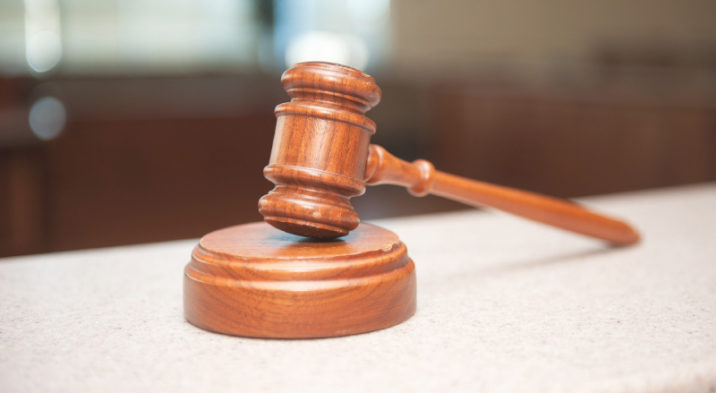
CASE IN POINT – APRIL 2021
TO SUPPORT OR NOT TO SUPPORT
INTRODUCTION
What duty of lateral support does a property owe to its neighbouring properties?
Our law has from time immemorial imposed a duty of lateral support on properties with a concomitant right to lateral support in favour of neighbouring properties.
There was until last year some confusion as to the exact scope and ambit of this duty and reciprocal right. Some viewed it as akin to a servitude, others as being rooted in the law pertaining to neighbours.
BACKGROUND
In 2008 Ms Marina Petropulos decided to build a house on a vacant site owned by her in Camps Bay, Cape Town, situated on a steeply sloping mountainside fronting onto Barbara Road.
In March 2008 Ms Petropulos’s contractor commenced the necessary and very extensive excavations on her property for a lift shaft and to produce three platforms, each supported by a retaining wall.
To say that the excavation was extensive is to put it mildly. It involved the removal of 5 413 m³ of earth, 57 occasions on which blasting was done, as well as the removal of many large boulders, with one particularly large one requiring blasting. The lift shaft excavation was 13 metres in length, 5.5 metres wide and 9.5 metres deep.
Mr Artur Dias owned the property served by Theresa Road upslope from Ms Petropulos’s site.
In May 2008 problems became evident in Mr Dias’s property. A terra‑force wall on his property and the ground under it collapsed. The entire slope on which his property is situated subsided and extensive structural damage occurred to his property.
Unsurprisingly, Mr Dias blamed the excavations on Ms Petropulos’s property for his woes, particularly in view of the fact that his house and property had stood unaffected for the prior 16 years.
Mr Dias instituted legal action in the Western Cape High Court (WCHC) against Ms Petropulos for damages based on a breach of the duty to provide lateral support.[1]
Ms Petropulos defended the action on the grounds that:
- she did not owe a duty to provide lateral support because Mr Dias’s property was no longer in its natural state;
- the excavation on her property was neither the factual cause of the harm suffered nor was the excavation on her property linked sufficiently closely to the harm caused to Mr Dias’s property for legal liability to ensue (causation);
- the excavations did not breach any duty to provide lateral support;
- absent a finding of fault (negligence or intent) on her part, she should not be liable for Mr Dias’s damages.
IS THE DUTY OF SUPPORT OWED ONLY IN RESPECT OF LAND IN ITS NATURAL STATE?
The Court undertook an extensive survey of the various legal authorities and case law.
A number of cases in our law had found that the duty of support is confined to land in its natural state which resonated with English law on the subject.
In fact, English law holds that at any time within twenty years after a house is built on a neighbouring property, a lower property owner can dig soil away even if it results in the neighbour’s house falling in ruins to the ground.
However, other cases held that our law should not follow English law and that the duty of support applied both to land in its natural state, as well as land that may have been improved by the construction of buildings thereon, save where such land has been unreasonably loaded so as to place a disproportionate or unreasonable burden on the neighbouring land.
The learned judge in the WCHC favoured the latter approach and held that Ms Petropulos was liable for the damages suffered by Mr Dias.
This resulted in an appeal to the Supreme Court of Appeal (SCA) in Bloemfontein.
SCA’s DECISION[2]
The SCA reviewed all of the relevant conflicting cases and upheld the proposition that the duty of support is not limited to land in its natural state but extends to buildings on the land as well.
However, the SCA found that the proviso to the effect that such duty of support will not apply where land has been unreasonably loaded was not a sound legal principle and was not good law. It pointed to the difficulty of determining what a disproportionate or unreasonable loading of land might be, especially if a landowner had constructed a home in accordance with Town Planning and Building Regulations. How could such a homeowner discharge the onus of proving that he had not unduly loaded his land?
DID THE EXCAVATIONS BREACH THE DUTY OF NATURAL SUPPORT?
Two eminent expert witnesses testified in the WCHC on this issue.
While they agreed that there was a slope failure that caused the ground movement, they differed on the cause and mechanism of the slope failure.
The SCA commiserated with the WCHC which had been faced with conflicting evidence of a very technical nature. However, it explained that in such cases the resolution of the dispute must depend on an analysis of the cogency of the underlying reasoning which led the experts to their respective conflicting opinions.[3]
The SCA upheld the decision of the WCHC in favouring the expert witness who testified for Mr Dias. Ergo the excavations did breach the duty of lateral support owed to Mr Dias.
CAUSATION
This question related to whether the excavations were sufficiently closely linked to the harm suffered by Mr Dias to impose legal liability on Ms Petropulos.
There are two elements to causation:
- factual causation where one looks to the causa sine qua non – commonly known as the ‘but for’-test: But for the excavations on Ms Petropulos’s property, would Mr Dias’s property have suffered damage;[4] and
- legal causation which relates to the question as to whether the conduct that factually caused the harm is too remote from the harm to be actionable. The dominant factor here is whether the harm was reasonably foreseeable, but other factors also come into play such as directness, the absence or presence of an intervening factor, legal policy and principles of reasonableness, fairness and justice.[5]
The SCA had little difficulty in concluding that both factual and legal causation was proven in the case.
NO FAULT LIABILITY
Ms Petropulos contended that it was incumbent upon Mr Dias to prove that her conduct was wrongful and that she had acted either with intention or had been negligent.
The SCA ruled that neither culpa (negligence) nor dolus (intent) is a requirement for liability for damage caused by the withdrawal of lateral support. In other words, it is now settled that liability in subsidence cases is strict.[6]
The SCA explained that the harsh consequences of strict liability are mitigated when one considers the principles applicable to the establishing of legal causation mentioned above.[7]
CONCLUSION
To sum up, the position in our law on the right of lateral support owed between contiguous properties is that:
- it is a natural right incidental to the ownership of property and not servitudinal in nature;
- it is a principle of neighbour law which rests on justice and fairness;
- it is owed to land not only in its natural state but extends to buildings upon it; and
- it creates strict liability without the need to prove fault.
ALASTAIR HAY
COX YEATS
Direct Tel: 031 536 8508
E-mail: ahay@coxyeats.co.za
8 March 2021
[1] Dias v Petropulos and another [2018] 4 All SA 153 (WCC).
[2] Petropulos and another v Dias [2020] 3 All SA 358 (SCA).
[3] Judgment: para [45].
[4] Judgment: paras [47] to [53].
[5] Judgment: paras [54] to [57].
[6] Judgment: paras [58] to [61].
[7] Judgment: paras [62] to [64].
